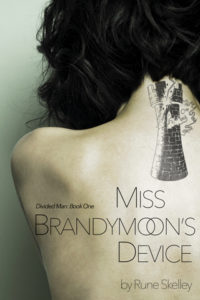Sayonara (Not So) Sweet ’16
![]() What a year. Politics were shit, and too many cool celebrities died.
What a year. Politics were shit, and too many cool celebrities died.
But!
It wasn’t total misery! Looking back at our post from this time last year, it seems we more or less accomplished what we set out to do in the writing cave. Son (and Grandson!) of Science Novel are both outlined, and we’re well underway with the composition. Go Team Skelley!
Where we deviated from our plan was basically everything that had to do with Son of Music Novel. It did not get time to rest quietly in a drawer, it did not get a thorough edit. Since the other members of our writers’ group were not at a point where they had anything to share, Son of Music Novel got its critique debut a bit early. It’s been a challenge to divide our attention between the projects, but we’re managing. At least we have each other’s shoulders to cry on.
So how did we spend our year 2016 at SkelleyCo Amalgamated Fictions, LLC?
In January and February we were deep in the outlining for Son of Science Novel. It’s pretty much the only thing we blogged about.
March brought our brilliant scheme to outline both sequels before moving on to prose. We did accomplish that, and as far as we can tell at this altitude, we haven’t fucked it up yet. If we can ever get out of this holiday quagmire and chain ourselves to our desks again, we ought to be able to finish up Son and roll right on into Grandson.
Along with taxes, April brought an end to the outlining, and a trip down memory lane. We cleaned out the Writing Cave and took a look at how we used to do things back in the Olden Days. Then we partook of a different kind of nostalgia, beginning an editing pass on Music Novel, which hadn’t seen the light of day in a while.
May was spent elbow-deep in the guts of Music Novel, editing like fiends. Or skilled surgeons, if you’d rather.
In June we hit a couple of bumps in the road, but our partnership (and marriage!) are as strong as ever.
Come July we were all over the place, working in all three of our story worlds at once, and beginning the preliminary work for self-publishing our very first novel, Miss Brandymoon’s Device.
Happy Anniversary! In August, our chain story reached installment 100! And we were still getting through all the throat-clearing that happens before we actually start writing a novel (or two).
 September was mostly spent in the run-up to publishing Miss Brandymoon’s Device. Kent created a beautiful cover for it and both of its siblings. We did all kinds of boring behind-the-scenes technical stuff with fonts and layouts and what-have-you. Jen took care of the final pre-writing tasks for the new novels.
September was mostly spent in the run-up to publishing Miss Brandymoon’s Device. Kent created a beautiful cover for it and both of its siblings. We did all kinds of boring behind-the-scenes technical stuff with fonts and layouts and what-have-you. Jen took care of the final pre-writing tasks for the new novels.
And then Boom! October! Book birthday! We think our new baby is gorgeous, and we hope you love it just as much as we do. Hop on over to your favorite book retailer and pick up a copy of the ebook for free! Or order a physical copy from Amazon. You won’t regret it!
Suddenly it was November. How could it possibly be Thanksgiving already? Please explain to us the passage of time. As we always do, we ignored NaNoWriMo and kept our own schedule, with got us to 20,000 by the middle of the month. Not too shabby, when you consider how many distractions we were dealing with.
Good thing there are no distractions in December, amiright? Despite a very long list of things vying for our attention we’re going to finish up 2016 with about 45,000 words in the can for Son of Science Novel. It’s not as many as we’d hoped we might have by now, but it’s nothing to sneeze at.
Jen was feeling a little disheartened that we weren’t further along, and as we worked on this Year in Review post she was able to diagnose her main issue. It feels like we’ve been working on this book for an entire freakin’ year! And that’s because we have been. But we took a huge break in the middle to edit several novels and actually get one of them out in front of people. Somehow that part had slipped Jen’s mind. But when you look at things rationally and see that we’ve only been actually writing this book since sometime in October, it feels like an accomplishment to be proud of.
So we’ll say it again, Go Team Skelley!
Next week we’ll talk about our plans for 2017.
